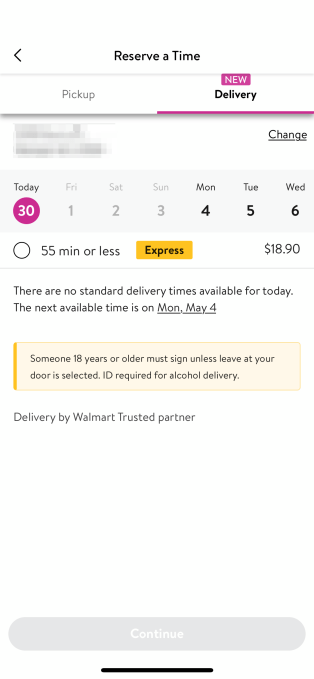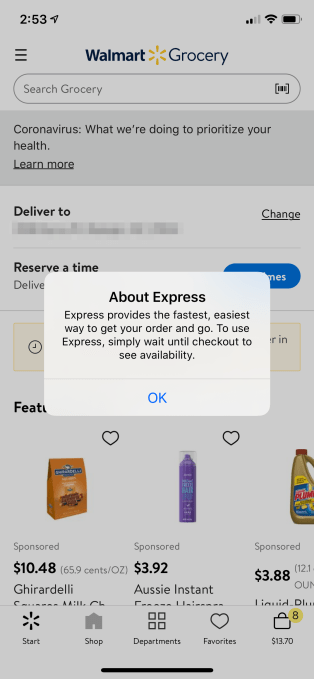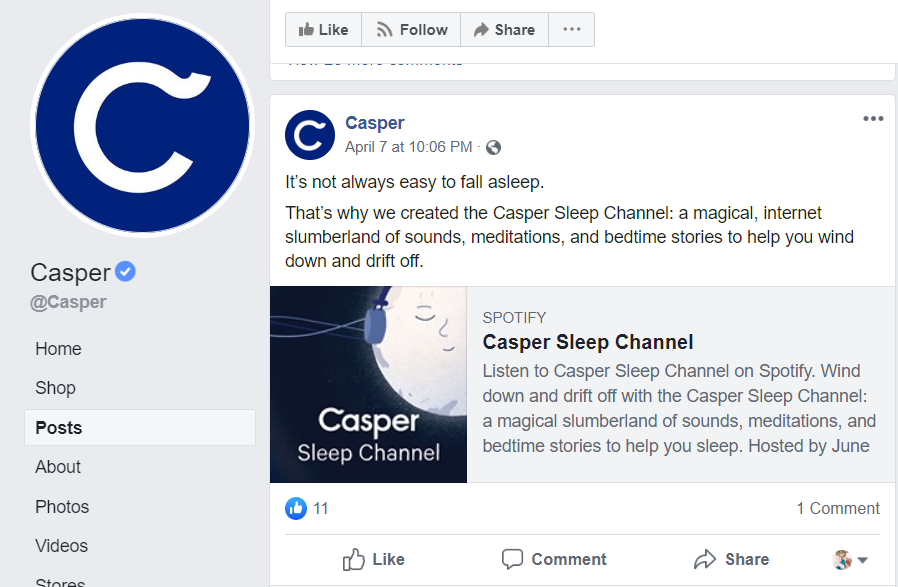Seeing as how the market is so large, we wanted to find out which free WordPress ecommerce plugins stand out. The conclusion is in: We believe WooCommerce serves as the best free WordPress ecommerce plugin. Throughout our research, over the past two weeks we narrowed the field down to eight, with Easy Digital Downloads (EDD) and Ecwid ranked right behind WooCommerce. We like WooCommerce for its superior integration tools and beautiful potential layouts. EDD has better tools for digital goods, while Ecwid looks to be the simplest for beginners.
The advent of the digital world has made starting a store online easier than ever. However, there are still steps that you need to take to set yourself up for success. For instance, having the right ecommerce solution in place ensures that you’re ready to transform your website with everything from shipping support, to a checkout.
The question is, which free WordPress eCommerce plugins are best for your WordPress website? A quick search on Google brings up tons of options, ranging all the way from HubSpot to SendinBlue for email marketing and landing pages.
So, which solution should you try?
The good news about WordPress ecommerce plugins is that they integrate with an existing WordPress site. Therefore, if you run a blog and eventually decide to sell eBooks or merchandise, you have the capabilities to do so. We primarily looked at free solutions, since, frankly, the free solutions are far better than any paid ones.

Along with existing sites, these plugins integrate with new WordPress installs, and some reputable WordPress hosting companies offer one-click ecommerce installations with WooCommerce included. Upon installing an ecommerce plugin, your WordPress blog or business site immediately gains functionality for selling digital and physical products.
Editor's note: This post was originally published on October 24, 2013 and has completely revamped and updated for accuracy and comprehensiveness.
For example, a blog, business or non-profit might sell:
- Physical products like jewellery, clothing, toys, or electronics.
- Digital goods like music, software, templates, eBooks and more.
- Subscriptions and memberships with recurring payments.
- Services like web design.
- You can even accept donations if you're running a church or another non-profit.
Our final decision was based on quite a few factors, but overall, WooCommerce (read our WooCommerce review) is completely free for making a pretty substantial online store, and the market is catered around WooCommerce, with developers making all sorts of extensions and themes that integrate with the plugin. The reason for this is that WooCommere is open source, giving users the benefit of open and active development and support community.
Real, digital and subscription products can all be sold through WooCommerce, and it's one of the few plugins that allow you to scale up quickly as your company grows. Along with several marketing extensions (email marketing and social media,) dozens of the top payment gateways, and extensive product pages with variants, groups, and affiliates, the feature-set defeats all other offerings from free ecommerce plugins.
As for the other solutions, some individuals and companies are bound to find them more suitable in certain cases. For instance, some of them are more useful for when a company is only selling digital downloads. Others are insanely easy to set up and manage on a simple blog, making them more ideal for beginners. Not to mention, a few of the plugins integrate with other CMSs (content management systems,) offering a little versatility to bloggers who aren't on WordPress.
A great example is comparing WooCommerce to Ecwid. Although the overall feature set for WooCommerce beats out Ecwid, you're more likely to choose Ecwid if you're trying to integrate with Weebly, Wix or Joomla. On the other hand, WooCommerce only combines with WordPress.
WooCommerce has support for digital products, but you're better off going with EDD if that's all you sell. We like WooCommerce for those companies that sell both physical and digital products since you get the combination of tools.
Seeing as how all of the solutions covered are free, we won't really discuss price. A more reasonable comparison tool would be the pricing (and availability) of themes and extensions.
EDD offers a solid set of extensions, one of which supports physical products. But that's one of the main reasons it sits in second place: Because you must pay for that extension. As for the reason, EDD defeats some of the other solutions on the market: EDD has everything from discounts to codes to solid data reporting. The main benefit would have to be its extension library, though, since many of the options below that don't provide anything extra besides the core features. Oh yeah, and the EDD checkout looks super basic and user-friendly.
Table of Contents: Free WordPress Ecommerce Plugins
Why You Should Trust Us
Right out of college I started a career in marketing and web design. After working on sites and email marketing campaigns over the course of three years, I turned to the world of ecommerce. The majority of my clients include WordPress plugin and theme developers, along with web design and ecommerce online magazines that cover everything from coding to expert WordPress theme roundups.
Many of my articles include reviews, making it easy for me to understand what needs to be looked at for a digital product like a plugin. I test the products over several days, often using them myself for my own businesses. For instance, I manage a few WooCommerce sites for a few of my clients, and Easy Digital Downloads has always been my choice for the digital ecommerce world.
That said, all of my ecommerce work started with other solutions such as WP Ecommerce. I enjoyed both of those, but as time passed I discovered my favorites.
Also, after a few years on board the Ecommerce Platforms team, and hundreds of ecommerce articles, I can confidently say that my knowledge of the ecommerce world makes me a solid expert for training individuals and companies alike. For example, one of the early requirements as a resident researcher was to create an extensive review and comparison on the best WordPress membership plugins. Another was a tutorial outlining the steps to construct a fully functional marketplace with the help of WordPress and the Marketify theme.
Overall, I have the skills to analyze these WordPress ecommerce plugins, breaking down the features that make them unique. In addition, I know everything there is to know when it comes to implementing the plugins to create a complete ecommerce website, regardless of the products being sold. Considering the average person doesn't have the time to research the nitty gritty of these plugins and ecommerce platforms, I've taken the role of expert.
Who is This For?
Many companies and individuals make money without selling through an online store. You have physical, retail shops, along with bloggers who make money with affiliate links. There are also service-oriented companies like law firms and cleaning services.
On the surface, the service businesses don't look like they would be selling anything online. However, technically, any type of business has something to offer in terms of online commerce.
Let's start with the obvious. Some organizations start off with a great product idea. Others would like to purchase items from a manufacturer or become a drop shipper. Both of these businesses need an ecommerce platform. Whether or not you go with WordPress depends entirely on your company. The reason we want to cover WordPress plugins (and the reason these plugins are so popular,) is that about 19% of websites run on WordPress. Therefore, there's a good chance a new or experienced ecommerce pro needs to know these things.
The reason we want to cover WordPress plugins (and the reason these plugins are so popular,) is that about 19% of websites run on WordPress. Therefore, there's a good chance a new or experienced ecommerce pro needs to know these things.
I would recommend WordPress to those who want a fairly basic system but also worry about scaling up. With WordPress, you don't need to be a coding wiz with all of the plugins and themes available. However, if you would like to learn a little something about the more advanced modifications, or you'd like to hire a freelancer to improve your site, the options are there.
On the other hand, we have a more “cookie-cutter” platform like Shopify. I like it for the simplicity and feature-set, but some people feel like the customization falls flat.
Overall, businesses that are strictly centered around ecommerce should highly consider WordPress, since you never know how often you would like to make a change to the code or ramp up your server space. In addition, plugins like these ensure that you can always add functionality to your site.
We also like these WordPress ecommerce plugins for bloggers. The CMS of choice for blogging has been WordPress for quite some time since the installation takes like two minutes and you can get themes, plugins and a wide range of post formats. Therefore, the best WordPress ecommerce plugins integrate with your current blog, just in case you plan on selling that eBook or webinar.
The final group involves regular brick and mortar businesses and services. WordPress ecommerce plugins may not apply to you right now, but if you ever think about selling services or expanding your retail business online, these plugins give you the right tools. For example, a local hardware store might eventually decide that they'd like to sell some Weber grills on their site due to popular demand. A WordPress site and plugin would do the trick.
Finally, we recommend these plugins for people who don't want to break the bank. You don't have to pay a dime to download them, which is pretty neat considering you can test them out before committing. In addition, solutions like WooCommerce have various free themes and plugins with the whole open source community. The options are limitless for an organization with a budget.
How I Chose and Tested the Best Free WordPress Ecommerce Plugins
Now that it's clear who should consider an ecommerce plugin for WordPress, along with some of my original thoughts on the options, it's time to look at the top eight tools I evaluated for this test:
From the start, I put all of the plugins on an even playing field. Yes, I've used some in the past, while others I haven't had any experience with. However, I began the comparison by imagining that I was a complete beginner. This way, I wouldn't have any bias, and I was able to jump around and discover and test out features like someone who is looking to obtain as much information as possible.
To start, I decided on three must-have features to see if any of the solutions got cut out. I also wanted to evaluate the overall user-friendliness of the plugins, since this will factor in greatly for most companies looking for an ecommerce plugin.
The three must-have features are:
- Some sort of offering for selling both physical and digital products – When peddling physical products, the features are simpler, since you're looking for product pages, taxes, shipping, and variants. The majority of the plugins offer that. I don't care if the physical product functionality is achieved through an extension, as long as it does the trick. As for digital goods, this is where some of the systems fail. I figure many companies are looking for a more secondary digital selling system, but sometimes you want more. The tools needed include automated emails with download links, customer profiles for later downloads and restrictions for those downloads.
- A beautiful shopping cart – The problem with calling a shopping cart beautiful is that it's pretty much my opinion against yours. However, we can identify a few key items in a shopping cart that make it beautiful and simple. The first area to examine is where you're sent for the checkout. You'll want the checkout to be hosted on your own site so that the customer isn't redirected to a third-party. Also, it's nice to see a shopping cart with just a few steps and clean, short forms. The branding needs to be customizable, and I don't want to see any branding from the actual plugin companies. This is your ecommerce site, not theirs. Finally, simplicity ties in huge with a shopping cart. Does the checkout provide plenty of clean, white space? Does it cut out unnecessary distractions such as popups and ads?
- An extension library to expand the basic features – One of the primary reasons I recommend WordPress to so many people is because of its open source community. This means you get everything from wonderful third-party themes to plugins that expand the functionality of your site. The glory of WordPress plugins is that they can also be extended. Considering all ecommerce sites are all completely different, this alleviates the pain that would generally come with a more cookie-cutter system. For example, you might be able to integrate with a membership plugin for recurring payments; or maybe you're more interested in finding a way to accept payments through a different payment gateway. More often than not, an extension is available with the right plugins. Note: During my evaluation, I didn't consider the WordPress plugin library as an extension library.
With these three must-have features, our list gets narrowed down a little bit. Which ones are still around?
Dropped out:
- Cart66 Cloud – From accepting donations to publishing digital magazines, Cart66 offers a few features that make it rather enticing. However, I can't pass up the fact that an extension library is not provided.
- SendinBlue – SendinBlue might not seem like your typical WordPress ecommerce plugin, but it can make a huge difference to your store. This unique tool makes it easier to connect with your clients. Whether you’re offering customer support or encouraging more online business, SendinBlue can help. This tool allows you to run all of your email marketing efforts from your WooCommerce store.
- WP Ecommerce – The shopping cart is beyond basic, resembling a simple, HTML website checkout from decades ago. Yes, you can absolutely customize the shopping cart if you know how to code, but I'm looking for better designs directly out of the box.
Now we have four ecommerce plugins to choose from. It's time to look at some of the more detailed features that really make the platforms shine. Although I would technically recommend any of these plugins to ecommerce professionals or entrepreneurs, we're going to look at the tools that separate the men from the boys.
The following features focus on flexibility and overall selling power. Therefore, we're going to want to understand if you can effectively sell complicated memberships. What about the payment gateways? Are they reputable and plentiful for people to choose from?
We'll take a look at each of these benefits to understanding which of the WordPress ecommerce platforms come out on top.
Without further ado…the other features I checked out include:
- Integrations with the most credible payment gateways – Payment gateway offerings require two things: Quantity and quality. Therefore, I scanned through the number of payment gateways provided through each plugin and checked to see if the offerings were any good. Far too often we see ecommerce platforms that choose one or two default payment gateways. I'm not a fan of this because each store should be able to do their own research to understand which rates are lowest for their particular sales numbers.
- Themes built just for the plugin – A good example of this is WooCommerce. If you select a WordPress theme that's not made just for WooCommerce, you may end up having problems, or the shopping cart and product display will fail to please customers. Therefore, we want to ensure that at least somewhere online we can find third-party theme developers who had a plugin in mind while creating the theme.
- Advanced user capabilities (wish lists, saving a cart, making a profile) – When a customer lands on your website they might only want to checkout with a guest account. However, the more loyal ones, the ones that make you money, require profiles for saving their past searches and carts. Quite a few are often included with user profiles, such as wish lists and an area where they can re-download their digital products. It's also nice for customers to have profiles for looking up shipping speeds and estimated times of arrival.
- Integrations with multiple CMSs – Interestingly enough, this is where WooCommerce fails the most. It's not a huge problem (especially since this article is about WordPress plugins,) but some of the plugins on this list are more suitable for alternative content management systems.
- Marketing tools (like email marketing and affiliates) – The good news with marketing tools is that if a feature isn't included in the plugin, you can generally check out the extensions library to locate the items you need. That's why we put so much weight on the extension library. That said, marketing tools range from Facebook stores to social media sharing buttons. You'll also want to ensure that your store has an email subscription form with an integration to MailChimp or AWeber.
- Tools to Sell Subscriptions and Memberships – If you're planning on having a subscription or membership site, you have to look at a whole different set of features. In fact, these tools should be your number one priority when establishing your site. On the other hand, some companies are giving out memberships or subscriptions as more of a secondary product. Therefore, you should focus more on the core product settings, payment gateways, and marketing tools. One area to look for with memberships includes content dripping. It's a method of revealing content as a user progresses through the site (like with an online course).
- Powerful customer management – From viewing customer history to checking out which people buy which types of products, the customer management area fuels the way you target market your customers and serve them with your support. After all, you're far more likely to increase your conversions if you have a graph and full spreadsheet of which customers are more likely to buy one shirt over the other. This way you can send direct emails to the customer with relevant information. I also like the customer management for helping your users. If someone calls in about a recent purchase, you better hope that your system quickly delivers the details to you.
- Discount codes and promotions – Discount codes and promotions are sometimes a little different for physical and digital products. The same goes for memberships and subscriptions or even when selling services online. However, it all starts with a simple area for people to punch in their promotional codes, along with a spot to generate these codes and ensure they aren't used improperly. My favorite type of discount system gives you far more options than you need. For example, I would want to have the ability to have a coupon work for only a certain item or amount of money being spent.
- Advanced reporting – WordPress has a modern and simple dashboard. Luckily, this means that you can check out your site stats without going to a special tab. In terms of WordPress ecommerce plugins, I want to have a snapshot of my most basic online selling stats, along with a more advanced page for seeing graphs and charts and exportable documents. For example, net and gross sales amounts should be on the dashboard, while a breakdown of your refunds might be located elsewhere. I've also noticed that some of the ecommerce plugins offer reports through mobile apps, moving them up a few pegs in my book.
- Shipping and tax calculators – One of the main ways you can decrease your cart abandonment rate is by being honest and upfront about your pricing. This means displaying taxes and shipping costs prior to the very last page in your checkout. Sometimes this can be calculated automatically, but more often we see calculators for the customers to punch in their zip codes.
- Variable product options – Product variants work for both physical and digital products. This means you offer options like shirt sizes and colours to your customers. Other product variables might tie into the grouping of products, which often gives customers a discount.
Our Pick for Best Free WordPress Ecommerce Plugins: WooCommerce
After taking a look at all of the features above, WooCommerce reigns supreme in my comparison. As discussed before, you shouldn't immediately think that WooCommerce is the right route for you. Is it the safest bet if going in blind? Yes. But should you really think about the type of selling you'll be doing before making the decision? Absolutely.

I know we jumped over pricing before (since all of these plugins are free,) but WooCommerce has the most useful selection of themes and extensions for free or really cheap. Many of the themes and plugins are made by the WooCommerce company (such as the Boutique theme and Woo Sidebars,) while others come from all corners of the internet, opening up chances for you to develop a full online store without the need to destroy your wallet.
WooCommerce even recently launched a Facebook for WooCommerce extension that allows you to quickly create sponsored Facebook ads based on the products in your store. After that, it lets you find more customers with Facebook, measure the results and create a complete Facebook store without having to punch in any extra details that aren't already on your WooCommerce site.

As discussed above, some of the other ecommerce plugins have extensions and themes as well, but none of them matches the quantity and quality of WooCommerce.

Seeing as how I broke down a huge selection of features that should mean the most to online store owners, let's take a look at how WooCommerce fared in each of the categories:
- Integrations with the most credible payment gateways – The WooCommerce plugin comes with five installed payment gateways. For example, you can accept payments through direct bank transfers, cash on delivery and check payments. In addition, it allows for credit card payments through Simplify Commerce and PayPal. Smaller stores will do just fine with these, but I tend to think that medium-sized to large stores require more options. That's why WooCommerce had some free and paid extensions for options like Amazon Payments, Stripe, Authorize.Net, PayPal Pro/Advanced/Express, FirstData, and Braintree. You can also improve the number of payment methods accepted because Apple Pay is now accepted through WooCommerce.
- Themes built just for the plugin – Whether you're going for a theme built by WooCommerce or a premium solution from a third-party developer, the options are becoming more and more plentiful every day. For example, places like Tesla Themes, Elegant Themes and ThemeForest all have WooCommerce themes. You can also find an onslaught of WooCommerce extensions on the WooCommerce site or elsewhere online.
- Advanced user capabilities (wish lists, saving a cart, making a profile) – Users can login to your site using WooCommerce and WordPress, but the majority of the other user capabilities are achieved with extensions and add-ons. For instance, wish lists and rewards programs are handled with extensions, while full user profiles can be setup nicely without any support from an extension. Not to mention, the improved product gallery enables customers to scroll through thumbnails quicker and slide around on images for better views.
- Integrations with multiple CMSs – WooCommerce only integrates with WordPress. As discussed before, you're better off going with a different ecommerce plugin if you have no interest in WordPress, or if you have a current site that's running on an alternative CMS.
- Marketing tools (like email marketing and affiliates) – This is another area where extensions come into play. Loyalty marketing is provided through an add-on, while email marketing, social media buttons and more can be found with the help of WooCommerce themes and add-ons. The built-in marketing tools include SEO, discount coupons and codes, product reviews and owner verification.

- Tools to Sell Subscriptions and Memberships – Subscriptions, bookings, and memberships all come in the form of extensions. These aren't exactly the least expensive extensions you'll ever find, but you can get them all for one-time payments, meaning that making your money back is far easier with potentially just a few sales.
- Powerful customer management – The primary way to check out your customer information with WooCommerce is to look out the customer history list. In the plugin, you gain access to all of the personal information they punch into your site, including address, phone number, email and more. The payment information is protected, but exporting customer lists and evaluating which users are crucial to your business is easy.
- Discount codes and promotions – This was mainly covered in the marketing tools tab above. Overall, the discounts and promotions support is pretty solid. You can even integrate with MailChimp with extensions. Other than that, we don't need to look at any of the other features since they were talked about above.

- Advanced reporting – It all depends on what you would like your WordPress dashboard to look like. I would assume most stores include a simple stats section in the dashboard, which is entirely possible through WooCommerce. In addition, all of the sales reports (from net to gross sales) can be exported from the dashboard and shared with people in your organization. One of the main reports covers the cost of goods sold, and you can even get email alerts when a new sales report is generated.
- Shipping and tax calculators – Choosing a shipping method takes place during the checkout. There's also a shipping calculator built into WooCommerce. Flexible shipping destinations can be activated, and you can reveal multiple shipping methods right in the shopping cart. The good part is that all of these options are shown before the last page. You can hide the shipping calculator, too. WooCommerce provides custom tax calculations for both you and the customer. Not only that, but the geo-location tax calculator pulls information from mobile device GPSs to identify exactly where the person is located (for checking in on their tax rates).
- Variable product options – WooCommerce has top of the line product variables and they're all managed in the product creation pages. This means that you always remember to set a product variable while constructing a product. The variables can be utilized for both digital and physical products.

The Runner-up: Easy Digital Downloads

Putting Easy Digital Downloads in second place begs the question: Was there anything that knocked it out of the first place spot? Well, not really, since Easy Digital Downloads serves as the best solution for selling digital goods. It does have the ability to work as a physical goods system, but we mainly like it as the core recommendation for digital sellers.
Take a gander at the bullet points below to see where Easy Digital Downloads fell to WooCommerce (along with where it succeeded):
- Integrations with the most credible payment gateways – Securely processing payments comes easy with EDD. You get options like Stripe. Braintree, Authorize.net, PayPal, Bitpay and more. The quantity and quality both look good, but you have to pay for some of these as extensions. That isn't the case for the major WooCommerce payment gateways.
- Themes built just for the plugin – The EDD add-on library supplies some high-quality extensions, some of which include EDD Message, ConvertKit, MailChimp, and Software Licensing. The add-ons typically cost you a little money, and you're not going to be able to find many third-party plugins. The library serves as the primary place to locate the add-ons. You don't really need a special theme for EDD to work.
- Advanced user capabilities (wishlists, saving a cart, making a profile) – Each user has a profile that they make when checking out or whenever they want to. Customer records can be linked to the profiles, so users see which downloads they may want to use in the future. In addition, this assists with boosting your customer service, seeing as how it shows what people have recently bought.
- Integrations with multiple CMSs – Similar to WooCommerce, EDD doesn't integrate with anything besides WordPress. For some people, this will be just fine, but if you have a previously-built site on something like Weebly, EDD can't help you there.
- Marketing tools (like email marketing and affiliates) – Various newsletter extensions come into play with options like MailChimp and AWeber. You can also locate extensions to maintain a solid set of marketing tools (such as social media buttons, SEO and landing pages).
- Tools to Sell Subscriptions and Memberships – EDD offers quite a few membership and subscription add-ons. For example, one of them gives you the ability to accept recurring payments. The Bookings add-on works well, too.
- Powerful customer management – EDD provides one of the most impressive customer management centers in the business. A separate file is stored for each customer, and you can view and edit any customer you like. The main reason EDD works so well for customer management is that it features an area that explains customer lifetime value for each of your buyers. Along with linking customer records to profiles, you can't go wrong with EDD in this department.
- Discount codes and promotions – The discount codes and promotions compare nicely to WooCommerce since EDD offers you the chance to choose flat rates or percentage-based coupons. Specify the products you'd like to discount and set automated start and end times. You can also have limits to who can use the coupons and minimum cart totals.
- Advanced reporting – EDD monitors downloads and sales, and you can view earnings by date range or category. It does have a quick stats view on the dashboard, but the real magic comes into play with the primary reports area. Some other reports offer information on taxes collected per year and exportable data.
- Shipping and tax calculators – No calculators are given with the default EDD download. However, the Simple Shipping extension serves you well for understanding your shipping processes and letting people know how much they are going to pay for shipping. I've yet to find a tax calculator that integrates with EDD, but I'll let you know if one comes along during the rest of my research.
- Variable product options – You're not going to find much built into EDD that assists with variable products. That said, the Variable Pricing Switcher plugin has you covered as an extension. It lets customers quickly switch between pricing options on your website. Therefore, if you'd like to offer three payment plans for a batch of WordPress themes, the users would be able to select the options they want. The variable product extension combines nicely with pricing tables since you can talk about the differences in the plans but also push customers through the actual payment process.
How the Competitors Compare
Let's take another look at our list of WordPress ecommerce plugins:
The Top Pick for Free WordPress Ecommerce Plugins
WooCommerce is our top pick since it works for beginners and advanced users alike. You're not going to spend much time with the installation and the cheap themes and extensions are too hard to pass up. But we'd also like to explore some other categories like simplicity, digital downloads, reports and for when you want to collect donations. It completely depends on what you're trying to sell, so some of the platforms are actually better than others in different categories.
Our Pick for Simplicity: Ecwid

We already talked about Ecwid, but you could really go with any of the plugins to get fairly simple checkouts. Jigoshop probably has one of my least favorite carts, but simplicity on the backend can make up for that. Overall, I would start with Ecwid then move on from there if you're a beginner.

As you can see, the Ecwid checkout provides plenty of white space while the customer moves through the process. I'm a fan of keeping the checkout to as few pages as possible, but sometimes that's not realistic. Therefore, Ecwid has a progress bar at the bottom of the checkout, telling customers how close they are to completion. For example, you can see steps for the shopping bag, shipping details, payment details and placing an order.
Our Pick for Scalability: BigCommerce
BigCommerce is hands down one of the top e-commerce platforms on the market for scalability. The stats speak for themselves; the average BigCommerce client boasts a 28% in growth year on year.
Not only can you set up an online store but you can also access tons of built-in features and data tools which go a long way in helping you grow your business. BigCommerce is best suited to business owners who already own either a large brand or a rapidly growing e-commerce store.

One of the many fabulous features of BigCommerce is the ability for business owners to sell from anywhere. Their multichannel integrations are phenomenal. You can sell via all the following channels:
- Facebook,
- Instagram,
- Pinterest,
- eBay,
- Amazon,
Just to name a few!
Then using BigCommerce's dashboard, you can manage all your orders from the convenience of one place- how awesome is that?!
Read our full BigCommerce for WordPress review here!
Our Pick for the Cleanest Dashboard and Strongest Reports: SendinBlue

We mentioned SendinBlue above as one of our top choices for eCommerce. Although this tool might not come with the same inventory management tools and other features as traditional WordPress eCommerce plugins, it has a lot to offer.
Unlike other solutions such as ECWid ecommerce, SendinBlue is all about nurturing your relationships with your target audience. When you’re trying to earn repeat customers and regular sales, email marketing is absolutely essential.
With SendinBlue, you can transform the user experience for your online shop, get real-time reports, and so much more. You can even build custom subscription forms to improve your chances of getting more people for your newsletter. The drag-and-drop tool mimics a lot of other high-level tools on the market today. You can build your emails with ease, without any knowledge of javascript.
SendinBlue also makes it easy to segment and automate newsletters so that you can send more unique messages to your target audience. Just like Yoast helps you to improve your presence on the search engine result pages, SendinBlue improves your appearance as a reputable and supportive brand.
SendinBlue’s plugin for WordPress is available as part of a free plan, so you don’t have to worry about extra expenses until you send more than 300 emails per day. Premium plans start at a reasonable price of around $25 per month.
Our Pick for Marketing Your Products: HubSpot

HubSpot All-in-One Marketing brings the power of the HubSpot Growth Platform to WordPress. Over 100,000 businesses use HubSpot to attract, engage, and delight their prospects and customers. The plugin is built to handle and improve your sales, marketing, and services.
With it, you can build and add beautiful forms and popups to your website in minutes thanks to the easy-to-use drag and drop builder.

And if you already have forms of your own, that’s okay too! Your forms will automatically sync with your HubSpot CRM (read our HubSpot CRM review) so you can easily segment your contacts into lists and see each interaction they've had with your website.
You can also easily add live chat and set up automated chatbots to respond to your visitors’ questions when you aren’t online.

You can send automated emails when someone fills out a form or sends you a live chat message, allowing you to be in constant conversation with your potential customers. All emails are automatically logged in your CRM. You receive notifications any time someone opens your email or clicks on a link so you can track engagement. The built-in analytics help you improve your overall marketing efforts.
HubSpot’s plugin integrates with over 200 tools, including Shopify, Stripe, Zapier, and major forms and email marketing software.
Our Pick for Digital Products: Easy Digital Downloads

EDD holds the crown for digital products. This is a solution that was made just for selling non-physical goods, so all you have to do is install the plugin and upload the items to your dashboard. Both Buy Now and Add to Cart buttons come along with EDD, and customers can save their carts and their past files to come back and download them later. Another primary reason EDD is the top solution for digital goods is that of the file access control. Basically, this means that you can specify how many people can download the file, or even make the file inaccessible after a certain period of time.

The iThemes Exchange plugin is yet another plugin that has a solid set of features for your digital products. Digital downloads, physical products, and memberships are available to sell through the system. Not to mention, the digital product pages include settings for product tags, categories, purchase messages and emails that get sent out when a purchase is made.
Our Pick for Collecting Donations and Making a Digital Magazine: Cart66

Cart66 was recently acquired by WP Easy Cart, and updated its name to Cart66 Cloud. The company built a WordPress eCommerce plugin that was dedicated to delivering smart experiences to all kinds of people from all backgrounds. With this service, you can reduce the number of plugins and extensions that you need to transform your site.
While it’s difficult to compete against something like WooCommerce when it comes to WordPress eCommerce plugins, Cart66 does have something unique to offer. It’s excellent for anyone who wants to keep their site lightweight and simple. Another big bonus of Cart 66 is that the company comes with access to its own unique marketplace of vendors.
When it comes to pricing, Cart66’s core plugin is free to use, but you will need to pay for the premium version at $49 per month if you’re looking for access to some of the top features. It’s also worth noting that Cart66 has some of the best customer support in the market today. If you’re worried about getting help to launch your website, then Cart66 could be the perfect choice.
Cart66 stands out from the crowd because all the features that you need to sell are built into the plugin. You don’t need to search for and configure extra plugins like Automattic and other ecommerce business tools. There’s a free version to get started, and then you can upgrade to something more powerful when you feel comfortable. Additionally, the email marketing from Cart66 is pretty strong in its own right.
Another big bonus of Cart66 is that the plugin comes with over 100 built-in payment gateways, and supports both digital and physical products so there’s no limit to what you can sell.

Some Final Thoughts and Things to Remember About the Free WordPress Ecommerce Plugins
Compared to other plugin comparisons, my ecommerce WordPress research gave me the right answers much quicker than usual. After all, just playing around with WooCommerce for a little bit shows you just how powerful it is. In addition, Easy Digital Downloads is so darn sleek when it comes to getting digital products on your site!
If you still have questions, here's what I would recommend: Take a look at the CMS you would like to use. If you currently have a website on anything other than WordPress, consider Ecwid before going on with anything else. If you plan on using WordPress, download the WooCommerce plugin and start playing around with it to see if you like it.
Create a product page for one of your items, try connecting to a payment gateway, and check out some of the various extensions to see which of them might help you out.
Easy Digital Downloads is the obvious choice for non-physical goods, but once again, I would suggest you install the plugin on your site to see how it all works out. I can't be certain that one plugin will work better for your company over the other, but I can give you the facts and features that you might want to consider.
Make a list of those features that mean the most to you, and take the time to check off the features covered in certain platforms. Then take a moment to download each of them that will satisfy your needs, and uninstall them whenever you think it isn't going to work out.
None of WordPress ecommerce plugins are going to weigh down your site, so go ahead and make a completely separate, and private, storefront for your testing process. If you have any questions you would like answered about ecommerce plugins for WordPress, feel free to drop a line in the comments section below.
featured image courtesy of Victor Belinatti
The post The Best Free WordPress Ecommerce Plugins (Apr 2020) appeared first on Ecommerce Platforms.

from Ecommerce Platforms https://ift.tt/2yrY6O9

via
IFTTT
 from eCommerce Training Academy https://ift.tt/35pqHp5
from eCommerce Training Academy https://ift.tt/35pqHp5 via IFTTT
via IFTTT





























